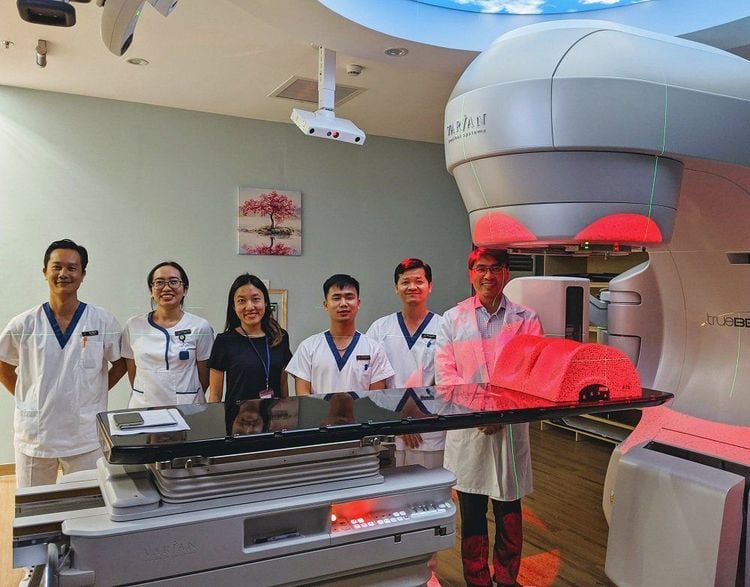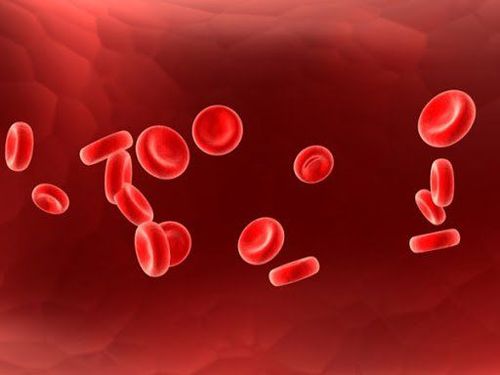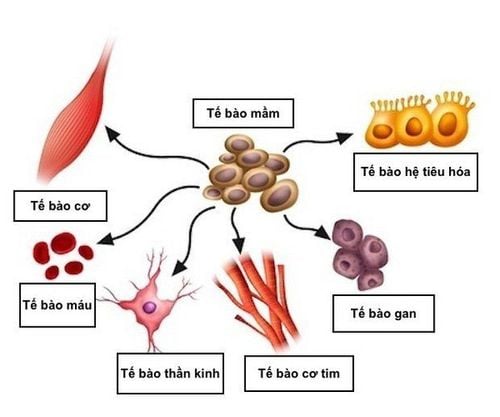This is an automatically translated article.
During embryonic development, germ cells are developed into eggs in the ovaries or sperm in the testes in males. In rare cases, germ cells travel to other parts of the body and form tumors. Intracranial germ cell tumor is one such case.1. Intracranial germ cell tumors in children
In children, intracranial germ cell tumors usually occur in the middle of the 3rd ventricle (pineal region, suprapituitary) sometimes in the hippocampal nucleus or in the base of the skull. According to some studies, tumors derived from germ cells account for 1-3% of intracranial lesions in children.
Intracranial germ cell tumor is a common disease in young people, 90% of patients are under 20 years old, especially most common in the age group 10-12. It is also more common in men.
Usually the ratio between men and women is 1.5/1. Intracranial germ cell tumors account for about 2-4% of CNS tumors in children.
2. Types of intracranial germ cell tumors

Hình ảnh khối u tế bào mầm nội sọ
There are two main types of endosomal germ cell tumors, sperm cell and non-spermoid germ cell tumors:
2.1 Spermoid germ cell tumor (also known as Germinoma or seminoma), this type accounts for In the majority of intracranial germ cell tumors, approximately 5 to 15% have multifocal lesions at initial diagnosis.
2.2 Non-seminal germ cell tumor Non-spermoid germ cell tumor (also known as Non germinoma germ cell tumor (NGGCT) or non seminoma) includes the following types:
Embryonal carcinoma choriocarcinoma Yolk sac tumors Mature teratoma and immature teratoma or may be mixed with histopathological appearance of type on coordination.
3. Signs to recognize intracranial germ cell tumors

Trẻ nôn nhiều có thể là bị tăng áp lực nội sọ do tràn dịch não làm tắc nghẽn
Abnormal eye movements (difficulty seeing) or increased intracranial pressure (headache, vomiting, loss of balance and lethargy) due to obstructing hydrocephalus.
Tumors located in the region above the pituitary may cause pituitary dysfunction including urination and thirst, growth failure, and early or delayed puberty.
4. How is intracranial germ cell tumor diagnosed?
When a patient is suspected of having an intracranial germ cell tumor, a variety of tests and investigations will be performed to make a diagnosis. During tumor growth, germ cells normally produce proteins, which can be detected through a blood test. These proteins can be AFP (alpha fetal protein) and HCG, both indicators are also used to detect early cases where the fetus in the womb may have an intracranial germ cell tumor. In addition, computed tomography (CT) or magnetic resonance imaging (MRI) can help determine the exact location of the intracranial germ cell tumor.
5. Treatment of intracranial germ cell tumors

Trường hợp bị u tế bào mầm tinh sẽ điều trị bằng phương pháp xạ trị
Depending on whether the cells are spermatozoa or non-sperm germ cells, the doctor will offer different treatment options for patients with intracranial germ cell tumors.
If it is a germ cell tumor, radiation therapy is often used and is considered an effective method. Depending on the extent of localization or spread of cancer cells, the dose of radiation therapy will be increased to different degrees. If the germ cells are not spermatozoa, all conventional cancer treatment options such as surgery, radiation therapy, chemotherapy play an important role. If after a period of treatment, it is found that there is still a tumor, the patient will continue to have surgery until the second time to remove the tumor.
6. Unwanted side effects

Thiếu máu là tác dụng phụ có thể gặp khi điều trị hóa chất
Treatment of intracranial germ cell tumors is similar to the treatment of germ cell tumors that often cause unwanted side effects. Before treatment, the doctor will inform the patient's parents about these side effects.
For each patient, a surgical approach will be planned to try to reduce any possible complications. Depending on the drugs used, the side effects of chemotherapy will include the following manifestations:
Hair loss The amount of blood cells produced by the bone marrow is reduced leading to anemia, the risk of infection increased bacteria, bleeding and bruising; Loss of appetite when eating, leading to weight loss; Vomiting and nausea. Body fatigue, diarrhea, etc. However, most side effects are temporary and there are ways to reduce the effects of side effects as well as support the child to get through this phase.
Sometimes side effects will appear later, even years after treatment in some children. Side effects can include loss of hearing, kidney function, and breathing. If any side effects occur to the child, parents should notify the doctor or nurse for explanation and advice on how to remedy.
Any questions that need to be answered by a specialist doctor as well as customers wishing to examine and treat at Vinmec International General Hospital, you can contact Vinmec Health System nationwide or register online HERE.













